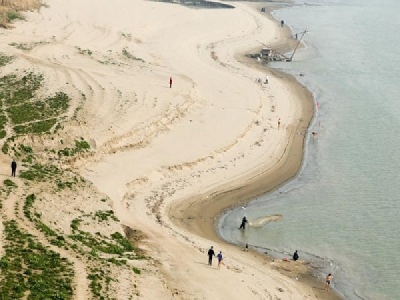
Posted on January 30, 2018
By Yang Jian, Shanghai Daily
A blueprint to turn a century-old Yangtze River sandbank near Chongming Island into a wetland park was issued at the weekend.
Protection of the Biandansha Sandbank — the name translates to shoulder pole due to its shape — can ensure the safety of city’s drinking water while also preserving the ecological environment at the mouth of Yangtze, according to researchers from East China Normal University and a Chongming District think tank.
The sandbank, a long and shallow stretch in the middle of the river, was formed around 1861. It was divided into upper and lower parts in the 1980s.
It absorbs sand and mud from upstream and serves as a purification and protection barrier for the Qingcaosha Reservoir downstream, Shanghai’s main tap water source for downtown residents, as well as the two other reservoirs, Dongfeng Xisha on Chongming Island and Chenhang in Baoshan District.
However, without proper treatment and control, the expanding sandbank is expected to eventually connect with Chongming Island, cutting off the protective barrier from the reservoirs as well as endangering the near extinct fish species in the waterway, Lin Tuo, a professor at the university and a UNESCO scientist told a seminar on Saturday.
Officials from the development and reform commission, and greenery, water and transport authorities, were also involved in the blueprint.
Fourteen species of fish, crabs and snails have been discovered on or near the Biandansha Sandbank, including the Songjiang perch, a fish with four gills that had vanished from the city nearly 40 years ago due to over-fishing and pollution. The sandbank offers an haven for the species, and the many migratory fish and the hairy crabs that rest there before heading upstream, said Lin.
Once the sandbank connects with Chongming, migratory fish and crabs would find it difficult to complete their migration, thus worsening the ecological environment at the mouth of the Yangtze.
The disappearance of the sandbank could also threaten shipping safety since the waterway currently serves as a busy shipping channel, Lin added.
The best way to protect and restore the sandbank is to develop it into a wetland park with more aquatic plants to stabilize it while dredging the waterway, said Mao Zhichang, a professor with the State Key Laboratory of Estuarine and Coastal Research at the university.
Source: Shanghai Daily





